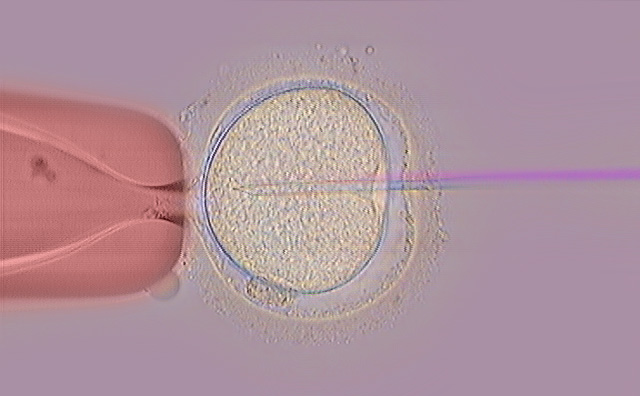
ICSI indications
Use of the intracytoplasmic spermatozoa injection (ICSI) technique began in the 1990s. It has been successfully used to resolve most severe cases of male sterility. Here is some information about when we use the ICSI technique:
Índice
When is ICSI (Intracytoplasmic Sperm Injection) indicated?
Male Sterility
- Oligozoospermia and criptozoospermia: a severe decrease in the number of spermatozoa.
- Asthenozoospermia: a severe decrease in sperm mobility, including some with no mobility whatsoever.
- Teratozoospermia: an elevated number of abnormal spermatozoa.
- Obstructive azoospermia: a total absence of spermatozoa in ejaculate due to an obstruction. The causes are most commonly genetic or inflammatory but also failed vasovastostomies.
- Secretory azoospermia: a total absence of spermatozoa in ejaculate caused by a defect in spermatozoa production in the testicle.
- Anejaculation: ejaculation dysfunction caused by retrograde ejaculation or paraplegia.
When men suffer from azoospermia and anejaculation, the spermatozoa required for ICSI can be obtained directly from the testes (testicular puncture or biopsy).
- Immunity: presence of an elevated number of antisperm antibodies.
- Valuable semen samples: patients who freeze semen samples before undergoing chemotherapy or radiotherapy; patients who require seminal lavage because they have infectious diseases (HIV, hepatitis); or patients who require donor sperm.
Female Sterility
- Retrieval of a low number of oocytes during follicular puncture.
- Generalised poor oocyte quality, including a thick zona pellucida.
Other causes
- Long-term sterility (over two years trying to get pregnant).
- Several cycles of unsuccessful scheduled sexual intercourse or artificial insemination.
- Failed fertilisation during conventional IVF in a previous cycle.
- Rescue micro-injection: oocyte micro-injection following a failure to fertilise after conventional IVF.
- In vitro maturation of oocytes.
- A failure to achieve a pregnancy following several cycles of conventional IVF.
- Genetic or chromosomal analysis of the embryo (PGT-M, PGT-A an PGT-S).
- Microinjection of vitrified oocytes.
IT MAY ALSO BE OF INTEREST TO YOU:
